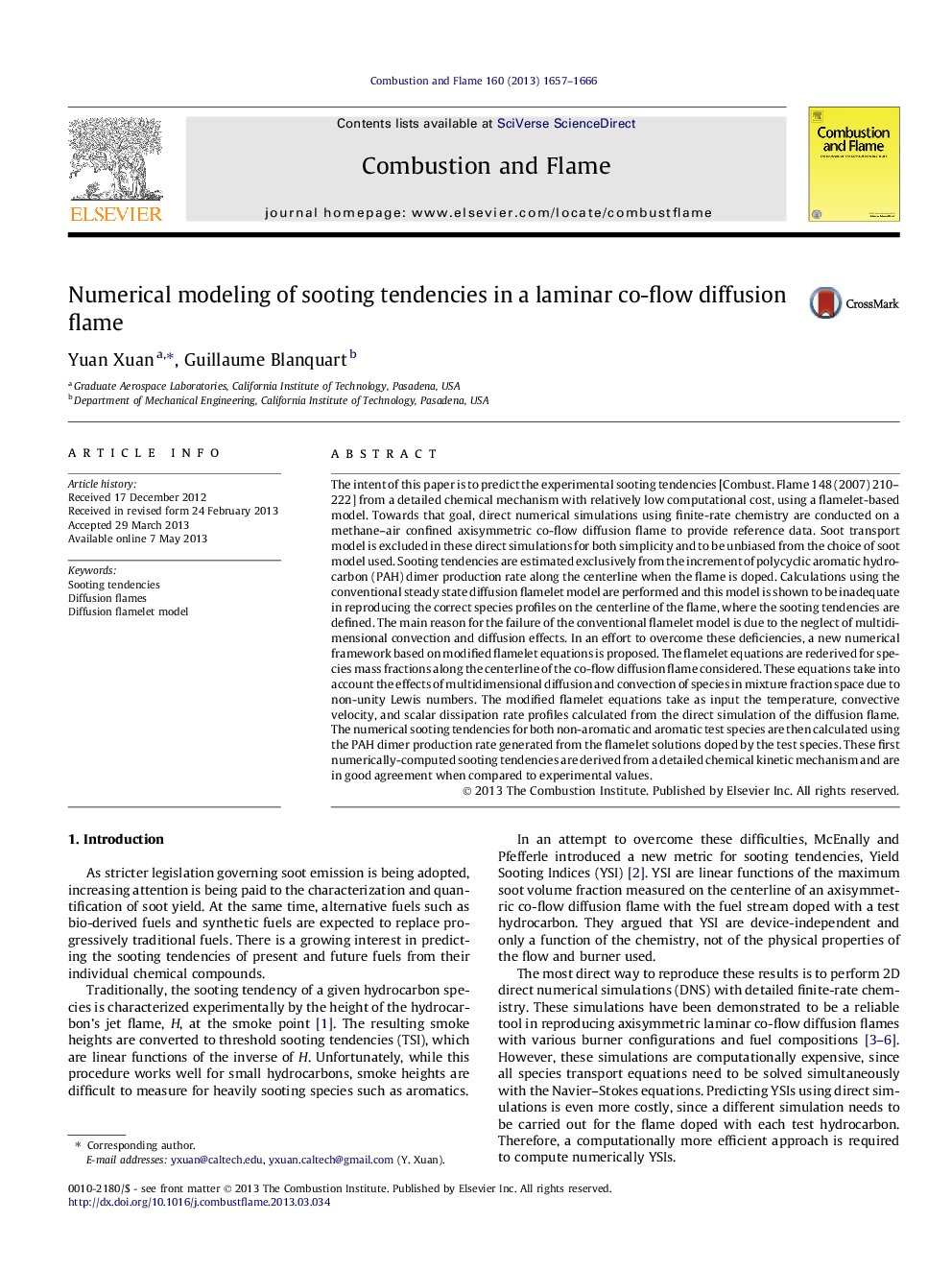| کد مقاله | کد نشریه | سال انتشار | مقاله انگلیسی | نسخه تمام متن |
|---|---|---|---|---|
| 166940 | 457829 | 2013 | 10 صفحه PDF | دانلود رایگان |

The intent of this paper is to predict the experimental sooting tendencies [Combust. Flame 148 (2007) 210–222] from a detailed chemical mechanism with relatively low computational cost, using a flamelet-based model. Towards that goal, direct numerical simulations using finite-rate chemistry are conducted on a methane–air confined axisymmetric co-flow diffusion flame to provide reference data. Soot transport model is excluded in these direct simulations for both simplicity and to be unbiased from the choice of soot model used. Sooting tendencies are estimated exclusively from the increment of polycyclic aromatic hydrocarbon (PAH) dimer production rate along the centerline when the flame is doped. Calculations using the conventional steady state diffusion flamelet model are performed and this model is shown to be inadequate in reproducing the correct species profiles on the centerline of the flame, where the sooting tendencies are defined. The main reason for the failure of the conventional flamelet model is due to the neglect of multidimensional convection and diffusion effects. In an effort to overcome these deficiencies, a new numerical framework based on modified flamelet equations is proposed. The flamelet equations are rederived for species mass fractions along the centerline of the co-flow diffusion flame considered. These equations take into account the effects of multidimensional diffusion and convection of species in mixture fraction space due to non-unity Lewis numbers. The modified flamelet equations take as input the temperature, convective velocity, and scalar dissipation rate profiles calculated from the direct simulation of the diffusion flame. The numerical sooting tendencies for both non-aromatic and aromatic test species are then calculated using the PAH dimer production rate generated from the flamelet solutions doped by the test species. These first numerically-computed sooting tendencies are derived from a detailed chemical kinetic mechanism and are in good agreement when compared to experimental values.
Journal: Combustion and Flame - Volume 160, Issue 9, September 2013, Pages 1657–1666